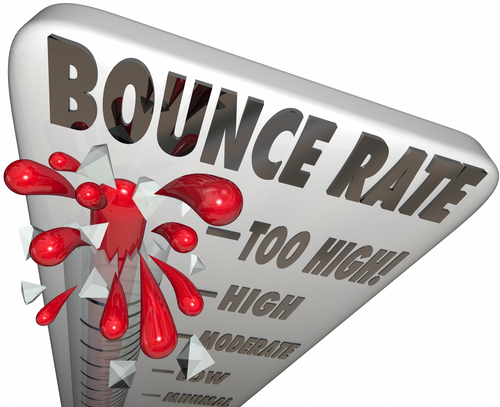What is the corrected reversal rate and why should I use it? | Weboptim
First, let us clarify the concept of the reversal rate. The bounce rate is not what many people think it is: it does not tell us whether users have read the content or interacted with it in some way.
According to Google, the bounce rate is percentage of one-page sessions (i.e. the person leaves the login page without any interaction).
In simple terms, a bounce is when someone gets to a website and leaves without having looked at other subpages or taken any action.
In reality, the bounce rate provides useful information about user behaviour, which can be useful when planning different marketing campaigns.
It provides very little valuable information. If the bounce rate increases or is too high, many people get scared (even though the average bounce rate for landing pages is 70-90%).

Some say that a high bounce rate is a good thing, as it means that the user has found all the information they need on the landing page.
It's important to keep in mind that when a user bounces back, he or she will no longer be included in other metrics, such as average session length.
The solution: the corrected reversal rate
In essence, we create a event, which is triggered when a user spends a certain amount of time on the landing page, and you can specify that Google Analytics should not count these users as bounce backs.
Let's take an example of a blog post performancet. The user goes to the page, reads the whole article and then exits, and is considered a returning user. This does not provide any information about engagement or user experience.
However, if we define a time limit, after which the user becomes 'engaged', they will then not be counted as a return visitor and we can get a more accurate picture of whether they found what they were looking for on the page.
If we incorporate the adjusted bounce rate indicator into our site, we can see how many of our blog posts with a previously high bounce rate have actually been read. This indicator is much more provides more valuable data, than the traditional reversal rate.
How to set it up?
The existing Google Analytics code should be extended by one line with the following line:
setTimeout("_gaq.push(['_trackEvent', '15_seconds', 'read'])",15000); // -additional line
In this code, the time limit is 15 seconds, but you can change this at will.
Moving to an adjusted return rate means that there will be fewer returns in Analytics, as well as improved accuracy of other metrics such as average session duration, but otherwise no impact on data collection.
The corrected bounce rate is not perfect, but the improved data and ease of implementation is a big step in the right direction and answers the question on everyone's mind: have users read the content?
Source: moz.com